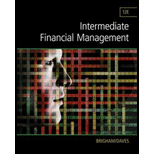
a)
To define: The term synergy merger.
a)
Explanation of Solution
Synergy is the motivation to merger. It means that after merger corporations are able to reduce cost and gain from merger. It results in economies of scale in management, marketing and production and increases efficiency. Merger is brings business of two firms under one business and increasing the value of shares.
b)
To discuss: The definition of vertical merger, horizontal merger, congeneric merger and conglomerate merger.
b)
Explanation of Solution
Horizontal merger means joining business of having same line of business. Vertical merger means joining business with its supplier or customer. Congeneric merger happens between related industries. Conglomerate merger happens when one business decides to enter into another industry and join with company in another industry.
c)
To discuss: The definition of friendly merger, hostile merger, defensive merger, tender offer, target Company, breakup value, and acquiring company.
c)
Explanation of Solution
A merger in which merger is approved by both the companies is called friendly merger. A situation where merger offer is resisted by the target company, it is called hostile merger. When one company is acquired by another company but target company tries to avoid acquisition by initial acquisition company is defensive merger.
A tender offer is a friendly merger where merger takes place with the approval of management of both companies and shareholders tender the shares. Target Company is the firm which is acquired by another company under merger. Breakup value is the value of company which is acquired by another company. Acquiring company is the company which purchase the another company under merger.
d)
To discuss: The definition of operating merger, financial merger.
d)
Explanation of Solution
An operating merger is merger in which operations in the firm involved are integrated and generate operating synergy. Financial merger is where operations of two companies are not integrated and does not generate operating synergy.
e)
To discuss: The definition of purchase accounting.
e)
Explanation of Solution
Purchase accounting is a method of accounting in which assets and liabilities of the firm are valued at fair price when merger is taking place to record in the books of acquiring company.
f)
To discuss: The definition of white knight, proxy fight.
f)
Explanation of Solution
White knight is the situation under merger where friendly investor invests in the company and acquires it with the support of management. The merger takes place at the fair value or fair consideration of assets and liabilities. Proxy fight is situation that arises when shareholders send their representatives as proxy and they form a group and try to win corporate vote.
g)
To discuss: The definition of joint venture, corporate alliance.
g)
Explanation of Solution
Joint venture is a creation of new entity by two or more parties to acquire new market, to gain from enhanced operations by acquiring skills and capabilities and sharing the risk of investment. Corporate alliance is a relationship build with the motive to reduce cost and improve efficiency.
h)
To discuss: The definition of divestiture, spin-off
h)
Explanation of Solution
Divestiture means divestment. It means withdrawing or cutting-off the investments done by company into another company. Spin-off of corporate means that company splits its one part business as a separate business.
i)
To discuss: The definition of holding company, operating company, parent company
i)
Explanation of Solution
Holding company is the company which has ownership interest in another company and runs the business of these companies. An operating company is the company which runs operations and provides with goods and services to customers. Parent company is the company which holds sufficient power in another company to influence the operations of the company. Sometimes holding company is also known as parent company.
j)
To discuss: The definition of arbitrage, risk arbitrage
j)
Explanation of Solution
Arbitrage is the advantage of difference in price in the two or more different markets and has no negative cash-flows as commodities are simultaneously bought and sold in two different markets at different prices striking the imbalance. Risk arbitrage means that stocks are purchased of the companies which may become takeover targets in some near future.
Want to see more full solutions like this?
Chapter 26 Solutions
Intermediate Financial Management (MindTap Course List)
- Please help with questionsarrow_forwardCreate financial forecasting years 2022, 2023, and 2024 using this balance sheet.arrow_forwardBeta Company Ltd issued 10% perpetual debt of Rs. 1,00,000. The company's tax rate is 50%. Determine the cost of capital (before tax as well as after tax) assuming the debt is issued at 10 percent premium. helparrow_forward

 Intermediate Financial Management (MindTap Course...FinanceISBN:9781337395083Author:Eugene F. Brigham, Phillip R. DavesPublisher:Cengage Learning
Intermediate Financial Management (MindTap Course...FinanceISBN:9781337395083Author:Eugene F. Brigham, Phillip R. DavesPublisher:Cengage Learning EBK CONTEMPORARY FINANCIAL MANAGEMENTFinanceISBN:9781337514835Author:MOYERPublisher:CENGAGE LEARNING - CONSIGNMENT
EBK CONTEMPORARY FINANCIAL MANAGEMENTFinanceISBN:9781337514835Author:MOYERPublisher:CENGAGE LEARNING - CONSIGNMENT Financial Reporting, Financial Statement Analysis...FinanceISBN:9781285190907Author:James M. Wahlen, Stephen P. Baginski, Mark BradshawPublisher:Cengage Learning
Financial Reporting, Financial Statement Analysis...FinanceISBN:9781285190907Author:James M. Wahlen, Stephen P. Baginski, Mark BradshawPublisher:Cengage Learning Auditing: A Risk Based-Approach to Conducting a Q...AccountingISBN:9781305080577Author:Karla M Johnstone, Audrey A. Gramling, Larry E. RittenbergPublisher:South-Western College Pub
Auditing: A Risk Based-Approach to Conducting a Q...AccountingISBN:9781305080577Author:Karla M Johnstone, Audrey A. Gramling, Larry E. RittenbergPublisher:South-Western College Pub Auditing: A Risk Based-Approach (MindTap Course L...AccountingISBN:9781337619455Author:Karla M Johnstone, Audrey A. Gramling, Larry E. RittenbergPublisher:Cengage Learning
Auditing: A Risk Based-Approach (MindTap Course L...AccountingISBN:9781337619455Author:Karla M Johnstone, Audrey A. Gramling, Larry E. RittenbergPublisher:Cengage Learning





